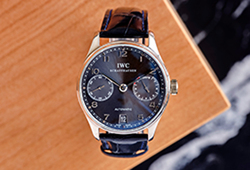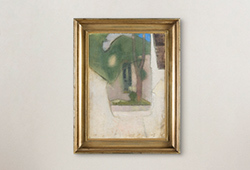Öyvind Fahlström
"World Trade Monopoly (B, large)"
Executed in 1970. Variable painting. Magnetic elements, acrylic, vinyl and metal on board, 92 x 128 cm.
Provenance
Sidney Janis Gallery, New York.
Galerie Daniel Cordier, Paris.
Galerie Baudoin Lebon, Paris.
Private collection, Paris, 1984.
Private collection, Sweden, 1995.
Exhibitions
Sidney Janis Gallery, New York, 17 March – 10 April 1971, catalogue no 8.
The Royal Dublin Society, Dublin, “ROSC´71 - the poetry of vision”, 24 October - 29 December 1971, catalogue no 40.
Museo Español de Arte Contemporáneo, Madrid, ”Buscando el Norte - Nueve artistas de Suecia” , September - November 1984, catalogue no 26.
Thomas Nordanstad Gallery, New York, “Öyvind Fahlström: Every way in is a way out”, 23 April - 31 May 1994.
Centre Culturel Suédois, Paris, "Öyvind Fahlström", 12 April – 21 May 1995, catalogue no 8.
Uppsala Konstmuseum, ”Spelrum - Öyvind Fahlström och tiden efter”, 30 May – 17 September 1995.
Kunstmuseum Lichtenstein, Vaduz, "Faites vos jeux!", 10 June - 23 October 2005.
Akademie der Künste, Berlin, "Faites vos jeux!", 17 December 2005 - 29 January 2006.
Museum für Gegenwartskunst, Siegen, "Faites vos jeux", 12 February - 7 May 2006.
The Cobra Museum of Modern Art, Amstelveen, ”Play! The Art of the Game”, 16 June - 24 September 2006.
Kunsthalle Düsseldorf, “Simon Evans & Öyvind Fahlström; First we make the rules, then we brake the rules”, 15 December 2012 – 17 February 2013.
Kunsthal Charlottenborg, Köpenhamn, “Simon Evans & Öyvind Fahlström; First we make the rules, then we break the rules”, 25 May – 11 August 2013.
Literature
John Peter Nilsson & Deborah Thompson (ed), ”Spelrum - Öyvind Fahlström och tiden efter”, 1995, exhibition catalogue, illustrated fullpage in colour p. 35.
Elodie Evers & Magdalena Holzhey e.a, “Simon Evans & Öyvind Fahlström; First we make the rules, then we brake the rules”, 2012, exhibition catalogue, illustrated on spread in colour.
Museo Español de Arte Contemporáneo, ”Buscando el Norte - Nueve artistas de Suecia”, 1984, exhibition catalogue, illustrated p. 82.
Erik van der Heeg & Sven-Olof Wallenstein e.a, ”Every way in is a way out”, 1992, exhibition catalogue, IVAM Centre Julio Gonzalez, illustrated p. 130.
More information
Copyright 2014 Sharon-Avery Fahlström / BUS.
MANIPULATING THE WORLD – ÖYVIND FAHLSTRÖM’S “WORLD TRADE MONOPOLY (B, LARGE)” (1970)
By Maibritt Borgen
Forty-one dazzling fields of color frame Öyvind Fahlström’s (1928-76) variable game-painting “World Trade Monopoly (B, large)” (1970; acrylic, vinyl, and metal on board). Magnetic elements are posed on top; ready for the game to begin, and an accompanying set of written rules dictate the placement of the pieces and suggests how the game might continue.
It is one in a series of eight Monopoly-works that Fahlström created between 1970 and 1971. Shocked by the terrors of the Vietnam War, the artist began, in his own words, “to understand during the late ‘60s that words like ‘imperialism,’ ‘capitalism,’ ‘exploitation,’ ‘alienation’ were not mere ideas or political slogans, but stood for terrifying, absurd and inhumane conditions in the world” (in ‘Propaganda’ of 1973, reprinted in “Öyvind Fahlström – Another Space for Painting”, Barcelona, MACBA, 2001). As a response, Fahlström’s Monopoly works critically engage the connections between global capitalism and American interventionist politics through a political formalism that the French art historian Jean-François Chevrier has aptly described as “geopoetic” (from Jean-Francois Chevrier: ‘Another Space for Painting: Concrete Lyricism and Geopoetics’, in “Öyvind Fahlström - Another Space for Painting”, Barcelona, MACBA, 2001).
Öyvind Axel Christian Fahlström was himself affected by the cruel games of global politics. He was born in Brazil to a Swedish mother and a Norwegian father, but he spent a large portion of his childhood as an orphan in Sweden after the outbreak of World War II in 1939 prevented his return to Brazil from a family visit to Stockholm during the school holidays. This turn of events left him separated from his parents until 1948, when they finally returned to Sweden.
At the age of 18, forced to choose between compulsory Swedish and Brazilian military service, he chose to adopt Swedish citizenship. After studying art history and classical studies at the University of Stockholm, Fahlström established himself as an artist, writer, and pioneer of concrete poetry in the 1950s. Early on, he spent substantial time in Rome and Paris, further developing his international outlook. In 1961, he left for New York, originally for a limited time funded by a grant from the Swedish-American Foundation. But he stayed in the city, doing most of his work there until his untimely death in 1976. His multi-medial practice spans painting, sculpture, and poetry, but also radio, happenings, journalism, and works for film and theatre.
GEOPOLITICAL PLAY
The 92 x 128 cm game-board of “World Trade Monopoly (B, Large)” follows a geopolitically-determined color scheme. Blue tones indicate countries dominated by American sphere of influence; red and yellow tones signify countries under communist rule. Third World countries are colored from brown to shades of green and blue-green, while the socialist democracies of Europe are purple. Countries are grouped by geography, causing an optical play of contrasting colors.
The “players” are the trading superpowers: United States, Japan and West Germany; each represented by a moveable magnetic element. The USA is split into two players: US1, the financial power complex, whose symbol is a light blue dollar sign, and US2, the military complex, represented by a darker-blue M-16 rifle, the U.S. military's standard service rifle during the Vietnam War. East Germany and Japan, whose graphic symbols are a Volkswagen Beetle and a camera, produced economic miracles after WWII built on massive aid from a United States that was terrified at the thought of impoverished countries becoming strongholds of communism. (The Volkswagen Beetle is the most produced car from a single design-platform in history. It was a global export success after WWII, but it was originally conceived by Adolf Hitler as a cheap mass-produced vehicle for an industrialized society.)
Each piece starts on its home country, located at one of the corners of the board. As the game proceeds, the players earn and lose capital, depicted by yellow million-currency coins, in a slow-moving trade of imports and exports. Import-units all start on third-world countries. But as the game unfolds, these resources move from third-world countries to the home-countries of the trading nations. Each import traded generates an export-unit that the player can then sell to the same third-world country to accumulate even more capital. A preparatory drawing in the collection of The Museum of Modern Art in New York outlines the realities of the trade-economical hierarchy. Third World countries sell raw materials and labor at low cost and buy finished products, know-how, machines and currency at high value. The West buys raw materials and food cheaply and sells machines, loans and finished products at high prices, leading to a situation where the financial balance will continue to tip in an unfair direction.
When a player lands on a country where another player has placed export units, she must pay use-profits. And, if she lands on another player’s home country, she must pay customs duties calculated from that country’s number of imports. If she is short of money to pay duties, the player can liquidate imports at an unfavorable rate. The game is lost when she cannot pay her duties and has nothing to exchange for capital. Blue chance-fields add unexpected events, such as depression and devaluation of the dollar, events that can change the course of the game.
SYSTEMS AND RULES – GRIDDING THE GAME-BOARD
Even during the heyday of Abstract Expressionism in the early 1950s, Fahlström explored games, rules, and systems as foundations for artistic practice. For Fahlström, rules brought with them the inherent proposition that the work could function removed from the subjectivity of the artist. This idea and the hard-edged grid of the game-board puts him in dialogue with the anti-gestural and de-personalized mode of “systemic painting,” such as Frank Stella’s 1959 The Marriage of Reason and Squalor, II, or works exploring chance-act distribution of color, such as Gerhard Richter’s 1974 color-chart 256 Farben. (Systemic Painting was the title of a show curated by Lawrence Alloway at the Guggenheim Museum in 1966. Alloway described Systemic Painting as tracing a movement in art away from the gestural and towards a mode of paintings in which the pictorial field functions as a totality. In his preface to the catalogue, he defines the systemic as the antithesis to the subjective, gestural activity of the American action painters, yet he insists on systemic painting being a continuation of an essentially “personal” project.)
The idea of the artwork as a self-generating system also drove contemporary practices in conceptual art. In his seminal 1968 essay “Sentences on Conceptual Art,” Sol Lewitt proposed, “the process is mechanical and should not be tampered with. It should run its course…. The artist’s will is secondary to the process he initiates from idea to completion (see Sol Lewitt “Sentences on Conceptual Art”, in Art-Language”, Vol. 1, No. 1, 1969)”. These sentences aptly describe the game-process Fahlström sets out in “World Trade Monopoly (B, Large)”, a process that through a mixture of rules and chance distributes the export and import units of various colors across the board. However, Fahlström’s colorful Pop-aesthetic, make his end-product fundamentally different from Sol Lewitt’s stringent formal expression.
But most significantly, game-rules propose an active spectator who, Fahlström believed, might bridge the spheres of “art” and “life”. He hoped that the proposition of variability would make spectators aware of ”the confrontation between freedom of variation and the ‘arbitrary’ immutability of appearance, substance and construction.” The ability to manipulate the material could break the inert “hardness” of the appearance of a work of art –the sharp silhouette of the vinyl symbol – and make spectators aware that most conventions we take as given in daily life are not fixed, but changeable. If we can manipulate Fahlström’s variable game-paintings, we might manipulate other expectations, or break the rigid conventions such as “the border between Congo and Angola, the numbers in the telephone book, the buttoning of jackets” (see “Hot Dogs and Tweezers – A Running Commentary”, Stockholm, from Konstrevy, No. 4, 1966).
By stressing the act of manipulation according to predefined rules, “World Trade Monopoly (B, Large)” proposes an agonistic game-model that differentiates Fahlström’s work from other ludic tendencies in 1960s art. (For a more detailed description of agonism, see Chantal Mouffe “On the Political”, New York, Routledge, 2005.) His games do not advocate free play, such as Palle Nielsen’s giant playground, The Model, staged at Moderna Museet in 1968. Nor do they share the utopian didacticism of Buckminster Fuller’s game-scenario World Game of 1961, wherein a set of players worked together to create global solutions to pressing issues.
Mostly, the Monopoly series seems aligned to the ’strategic thinking’ stressed by Guy Debord, the French key figure in the postwar avant-garde Situationist International, in his anachronistic Kriegsspiel Game of War from 1955. (Game of War built on the theories of Prussian military theorist Carl von Clausewitz (1780-1831). Clausewitz was the first theoretician to insist on the link between war and politics that war was: “neither ‘nothing but’ and act of brute force nor ‘merely’ a rational act of politics or policy” as described by Christopher Bassford, Clausewitz in English: The Reception of Clausewitz in Britiain and America, 2013-version, see www.clausewitz.com/readings/Bassford/Cworks/Works.htm#OnWar.) Debord claimed his game should embody “the dialectic of all conflict” and prepare the player for the class warfare of late capitalism. But Fahlström’s game is not directed towards total anarchy or a future revolt like Debord’s. Rather, Fahlström draws attention to the game-playing that structures real life.
Fahlström’s art brings together the personal and the political. It embodies the tragic conditions of the spectacle of war and its emotional consequences when everyday life becomes a game of power. For these reasons, “World Trade Monopoly (B, Large)” is as relevant today as when it was made.
Maibritt Borgen is a doctoral candidate in the department of History of Art, Yale University, where she is working on her dissertation on Öyvind Fahlström.
Bukowskis whishes to extend its sincere thanks to Maibritt Borgen for her contribution.





















